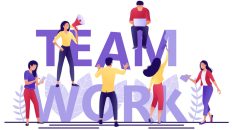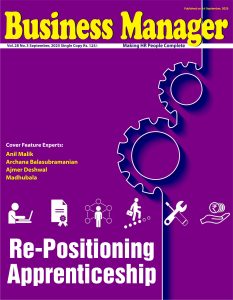Imagine a young professional dreaming of landing a job at a creative agency where they can contribute to developing innovative and effective campaigns. They are inspired by stories of viral marketing and industry pioneers, and see themselves as an innovator. However, the job market tells a different story: vacancies often require skills in data-driven marketing, AI applications, or years of experience that candidates may not yet have. This gap highlights the challenge between youthful ambition and market demands, posing difficulties for organizations. HR leaders play a crucial role in aligning these dreams with business realities to build a workforce that is not only visionary but also capable of turning those visions into reality.
The Aspirational Divide
The current generation of young professionals is a unique breed, purpose-oriented, flexible, and impact-hungry. The desiring digital world sees many wanting to become entrepreneurs in businesses or creative fields, inspired by a digital world that idolizes disruptors and visionaries. The social media exaggerates these fantasies and presents before us the success stories, which makessimilar outcomes seem attainable. Yet such visions can be quite beyond realistic possibilities. The skills that are focused on in education, though good, are not necessarily connected with the needs of employers. Job boards are saturated with fields such as AI, cybersecurity, or digital analytics, but most graduates would not stand a chance due to the lack of technical knowledge or experience. This disconnect is not only a personal challenge, but it is also a business strategic problem. Organisations are unable to staff jobs with great demand, and young recruits feel marginalised with their aspirations not matching the market requirements. The outcome is a double loss: disengaged workers and unachieved organizational expectations. Sitting at the intersection of talent and strategy, HR leaders can help fix this disconnection.
Also read – Next Gen Role in Family Run Business : Kavita Nigam
What the Market Demands
The labour market is tough and has changed because of automation, globalization, and economic shifts. Technology both eliminates and creates jobs—new ones appear in machine learning or cloud computing, while routine jobs disappear. Employers look for people who can adapt quickly, with technical skills and the ability to be flexible and solve problems creatively. Factors like tight budgets, globalization, and economic competition make companies prefer candidates who can deliver immediate value. In a constantly changing world, soft skills such as resilience, teamwork, and critical thinking are also crucial. These facts may seem like obstacles for young job seekers. Youth unemployment rates are high, increasing competition, and employers tend to favour proven talent over unproven potential. Skills mismatch is clear: most companies say they can’t find candidates with the right mix of technical and interpersonal skills. Young professionals’ goals often clash with a market that demands skills they have yet to develop.
How HR Bridges the Gap
HR leaders can turn this challenge into an opportunity by —
- Shape Aspirations Early On:
The alignment starts before the candidates enter the job market. HR has an opportunity to work with schools and universities to explain career paths. Job shadowing, internships, or career workshops can expose students to the workplace and to skills that are in demand. Companies such as those in tech, for example, have initiatives where they introduce teens to code or AI, grounding those large ambitions in concrete actions. With clear perspectives on what is feasible and what is necessary, HR can help the young people to settle on careers that blend opportunity with passion.
- Offer Flexible Pathways:
Young professionals need independence, and they may be suffocated by inflexible job designs. HR can develop career paths that will enable exploration within the organization. Job rotation programs allow employees to explore interests, as well as develop well-rounded skills. Intrapreneurship programs, in which employees present new ideas, help harness entrepreneurial energy into the development of the company. The policy of one international company to give time to passion projects has led to innovativeness and loyalty. Having a flexible attitude allows young talent to develop without having to go around jumping ship.
- Foster Purpose and Belonging:
The modern youth is highly attracted by purpose. They would like to work at companies that share values with sustainability, diversity, or social good. HR can develop cultures that reflect such priorities, making purpose part of operations and mission statements. A consumer goods company anchored its strategy on sustainable practices that increased the attraction and engagement of talent. Inclusive policies, such as mentorship of the underrepresented groups, make employees feel appreciated, translating dreams into determination.
- Leverage Technology:
New Techcan match aspirations and opportunities in an efficient manner. Predictive Models powered technologies can align candidates with opportunities using skills and ambitions, and internal talent exchanges allow workers to see what other projects are available in the organization. Digital systems aid HR in foreseeing market trends,ensuring training programs are not outdated. By connecting with young talent early on social media, where they already reside, it is possible to highlight opportunities that appeal to their ambitions.
The Path Forward
It is strategically important to close the gap between the youth aspirations and market realities. HR leaders should assume the role of mentors and accelerators and influence talent pools, which should be individual and organisational. In the case of young professionals, it is having dreams coupled with the competence and flexibility in achieving them. To businesses, it is about investing in talent that is developing with the market. The gains are enormous: an engaged, innovative, and robust workforce. By addressing it, by helping young talent navigate the first steps via coaching and training, being more flexible, having a purpose, and using technology, HR leaders will not just eliminate a gap but create a future where young talent and businesses prosper together. The time to start is now.
Stay connected with us on social media platforms for instant updates click here to join our LinkedIn, Twitter & Facebook








